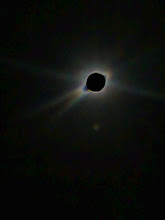There are, quite literally, millions of starting hands in a game of poker, but only 169 different two-card starting combinations - assuming 7s,8c is the same as 7c, 8d. We assume this only because both hands have identical hand strength pre-flop. We can then categorize these starting hands into the following groups:
- Pair: 7,7; 2,2.
- Connected Cards: 3,4; 5,6.
- Suited Connectors: 3d,4d; 5h,6h
- Gapped Cards: 3,7; 5,10.
- Suited Gapped: 2d,8d; 6c,10c
A couple of observations to note:
Connected cards make more straights. The closer the two cards are to one and other, the more likely they are to make a straight. i.e. With 7,8, you are more likely to make a straight than with 7,10.
Gapped cards are the worst types of cards to play. Unsuited gapped cards are the least valuable, followed by suited gapped cards.
Starting Hands in an Early Position.
Pairs: 7's through to Aces.
Suited:
AK, AQ, AJ, A10
KQ, KJ, K10
QJ, Q10
J10, J9
10,9.
Unsuited:
AK, AQ, AJ, A10
KQ, KJ, K10
Starting Hands in a Middle Position
Pairs:5's through to Aces.
Suited:
AK, AQ, AJ, A10, A9, A8, A7, A6.
KQ, KJ, K10, K9.
QJ, Q10, Q9, Q8.
J10, J9, J8.
10,9 - 10,8.
9,8.
Unsuited:
AK, AQ, AJ, A10
KQ, KJ, K10
QJ, Q10
J10
Starting Hands in Late Position
Pairs:2's through to Aces.
Suited:
Any suited Ace.
KQ, KJ, K10, K9.
QJ, Q10, Q9, Q8.
J10, J9, J8, J7
10,9 - 10,8.
9,8.
8,7.
Unsuited:
AK, AQ, AJ, A10
KQ, KJ, K10, K9
QJ, Q10, Q9
J10, J9.
10,9 - 10,8
9,8.
This is slightly tighter than Krieger's starting hands, because I feel that his selection is far too loose especially towards the later positions. This is still quite a liberal calling rate pre-flop, and you can tighten up a little bit beyond this to improve your overall EV (expected value). This chart is meant only as a guide, and players should only call the BB (big blind). For raises, you should probably only be playing the first line of each category per position.
 |




No comments:
Post a Comment